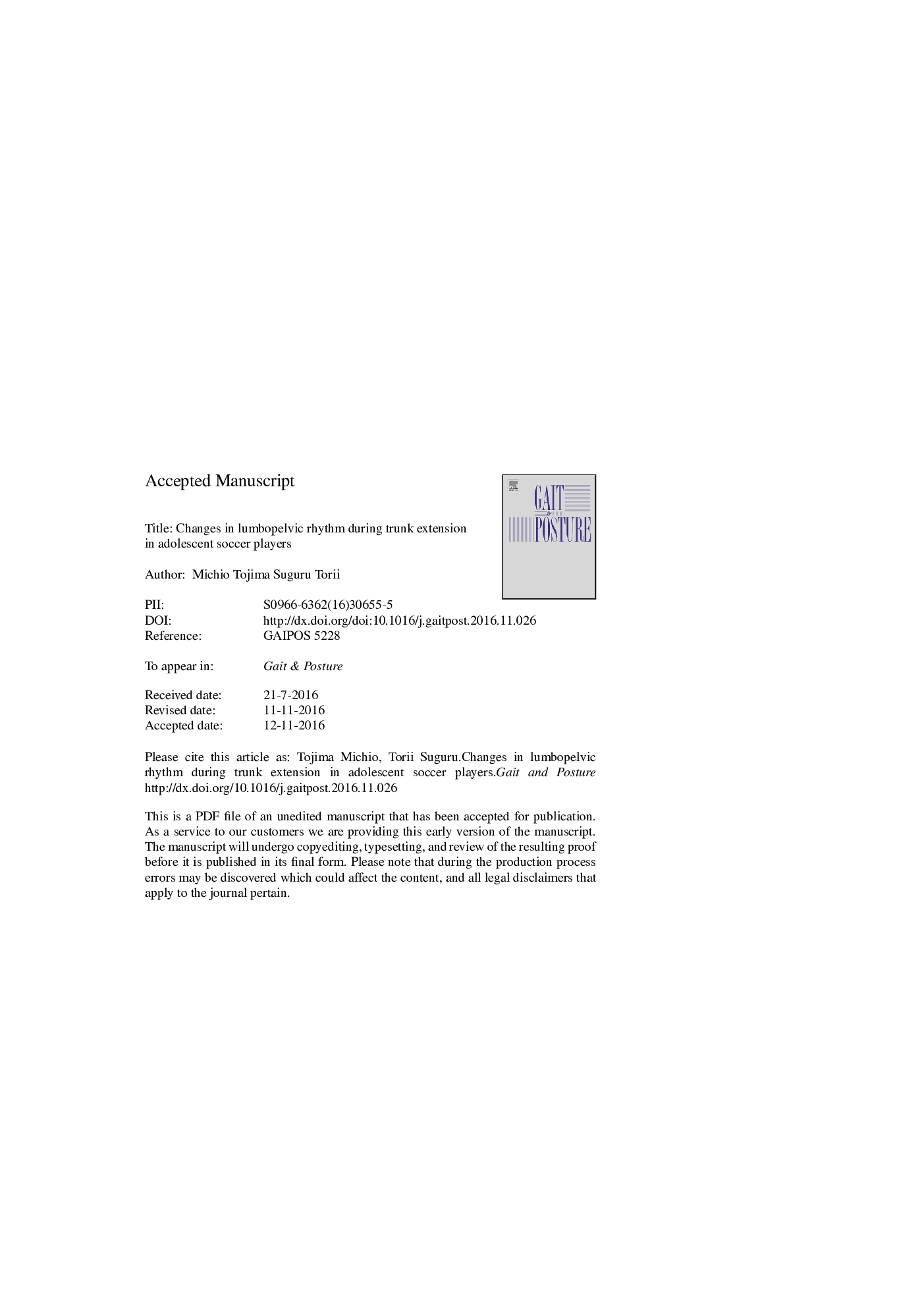| کد مقاله | کد نشریه | سال انتشار | مقاله انگلیسی | نسخه تمام متن |
|---|---|---|---|---|
| 5707530 | 1603843 | 2017 | 14 صفحه PDF | دانلود رایگان |
عنوان انگلیسی مقاله ISI
Changes in lumbopelvic rhythm during trunk extension in adolescent soccer players
ترجمه فارسی عنوان
تغییرات در ریتم بلبل در طول تنه در بازیکنان فوتبال نوجوانان
دانلود مقاله + سفارش ترجمه
دانلود مقاله ISI انگلیسی
رایگان برای ایرانیان
کلمات کلیدی
موضوعات مرتبط
علوم پزشکی و سلامت
پزشکی و دندانپزشکی
ارتوپدی، پزشکی ورزشی و توانبخشی
چکیده انگلیسی
Many adolescent athletes experience low back pain (LBP). Its causative factors include lower limb muscle tightness and hip-spine incoordination. Hip-spine coordination [or lumbopelvic rhythm, LPR] can be used to assess lower-limb and spine functions. We assessed the presence/absence of LBP in adolescent soccer players before and after a six-month period and divided them into four groups: no LBP both before and after the period (NBP group); LBP before but not after (PN group); LBP after but not before (NP group); and LBP both before and after (LBP group). We used a 3D motion analysis system during trunk extension to measure the lumbar spine and hip ranges of motion (ROMs). On comparing the results obtained before and after the six-month period, lumbar spine ROM decreased in the NP group, hip ROM increased in the LBP group. From before to after the period, the linear prediction indicated that, when the hip extends by 1°, the lumbar spine extends by 3.5°-3.2° for the PN group and by 3.4°-2.8° for the NP group. The NP group extended their lumbar spine excessively compared with the hip before the period, which could cause LBP, but decreased the extension after the period. Lumbar extension relative to hip extension decreased in the PN group, which could decrease excessive load on the lumbar spine and eliminate LBP. These findings suggest that to prevent LBP in adolescent soccer players, it is important to restrict lumbar spine extension relative to hip extension.
ناشر
Database: Elsevier - ScienceDirect (ساینس دایرکت)
Journal: Gait & Posture - Volume 52, February 2017, Pages 72-75
Journal: Gait & Posture - Volume 52, February 2017, Pages 72-75
نویسندگان
Michio Tojima, Suguru Torii,
